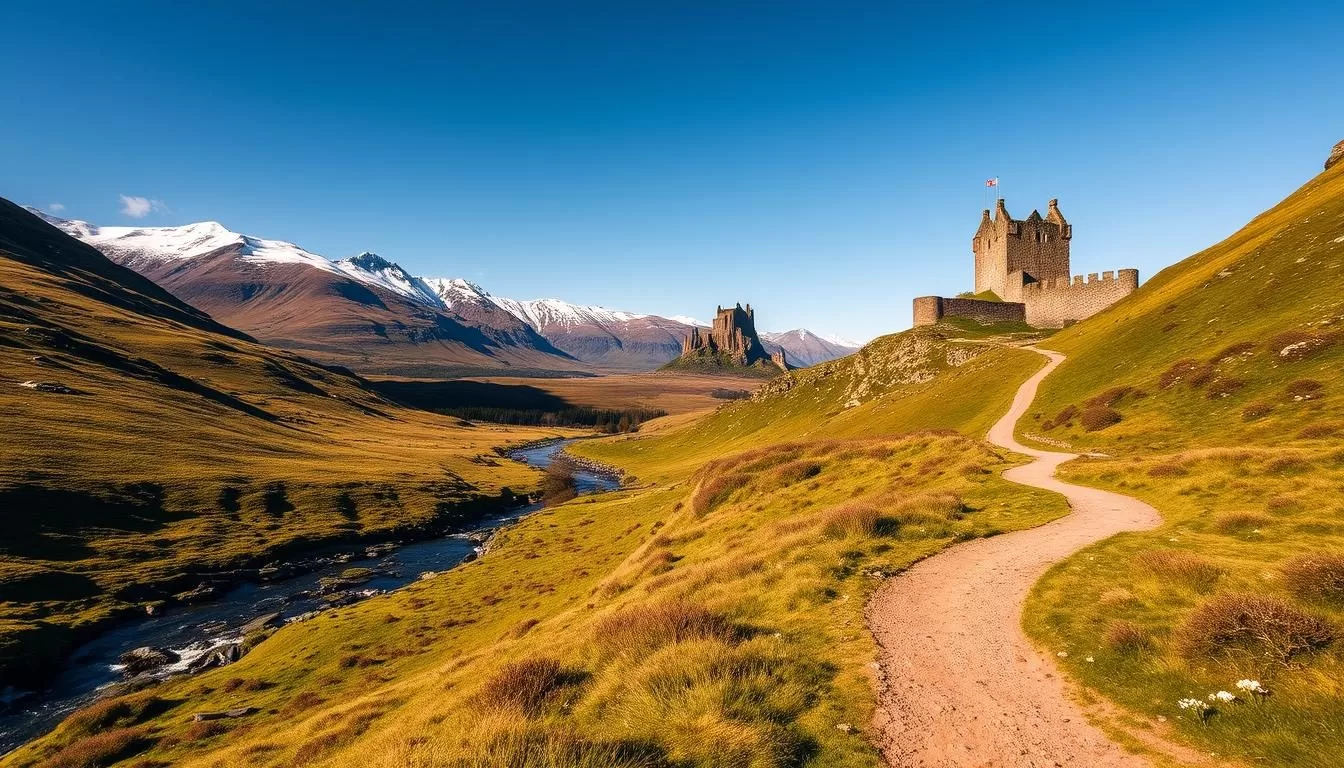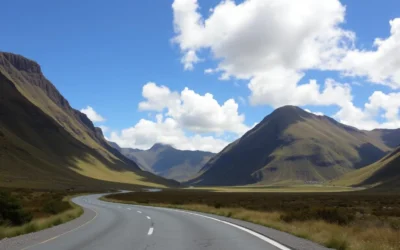✓ Accommodations✓ Flights✓ Rental Cars
Are you dreaming of an unforgettable adventure? Scotland offers a unique destination with its dramatic landscapes and ever-changing weather. Whether you’re exploring rugged coastlines or wandering through historic cities, this guide will help you make the most of your visit.
Scotland’s climate is as diverse as its scenery. From sunny days in summer to frosty mornings in winter, each season brings its own charm. Knowing when to visit can make your trip even more special. This guide will help you choose the ideal time based on weather patterns and seasonal events.
Packing smart is key to enjoying your adventure. Local forecasts and regional insights will ensure you’re prepared for anything. Whether you’re hiking in the Highlands or strolling through Edinburgh, this ultimate guide is designed to help U.S. travelers create lasting memories.
Understanding Scotland’s Unique Climate
Exploring the climate of this region reveals fascinating weather patterns. Its proximity to the Atlantic Ocean and North Sea creates a mix of cool, wet conditions and dramatic shifts in temperature. These factors make the weather here truly one-of-a-kind.
Geographical Influences on Weather
The Gulf Stream plays a key role in moderating the climate. While it keeps winters milder than expected, it also brings frequent rain and wind. This combination results in unpredictable weather, especially in coastal areas.
Inland regions experience more extreme temperature changes. Days can be warm, while nights often turn chilly. This contrast is something to keep in mind when planning your activities.
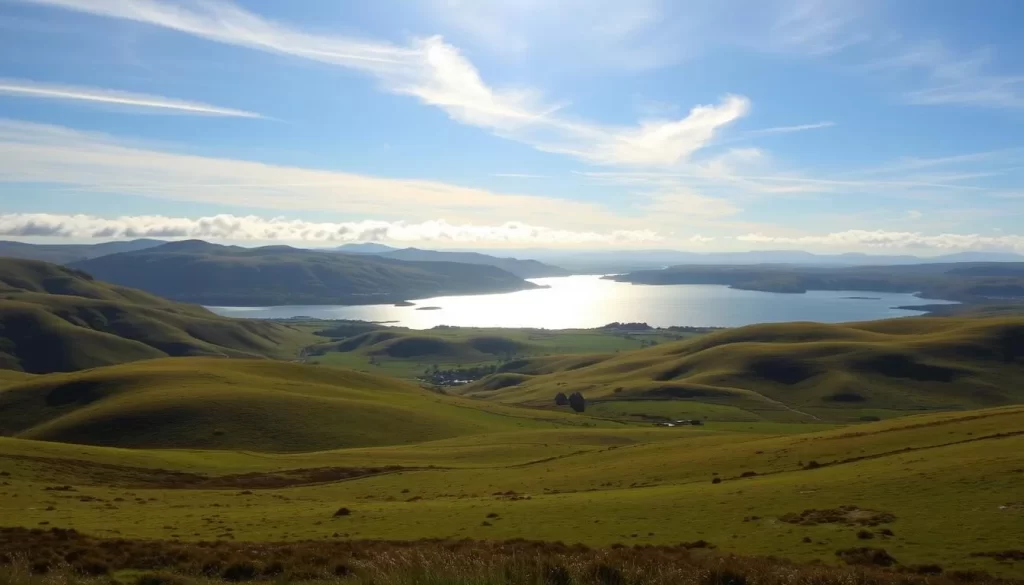
Daylight Variations Throughout the Year
One of the most striking features of this region is its daylight changes. In winter, you might only see 7-8 hours of light each day. But in summer, the sun can stay up for nearly 18 hours, especially in the northern areas.
These variations affect everything from sightseeing to hiking. Knowing the daylight patterns helps you make the most of your trip and pack accordingly.
Scotland, United Kingdom: Best Months for a Weather-Savvy Trip
Planning your trip around the right time can make all the difference. The weather here varies greatly by month, so choosing the ideal season ensures a smoother experience. Whether you’re after mild temperatures or extended daylight, understanding the best time visit helps you avoid weather-related challenges.
From May to September, the weather is milder and sunnier, making it the best time to explore. July and August are the warmest, with average temperatures around 66°F (19°C). However, these months also bring peak tourism, so expect busier trails and higher accommodation rates.
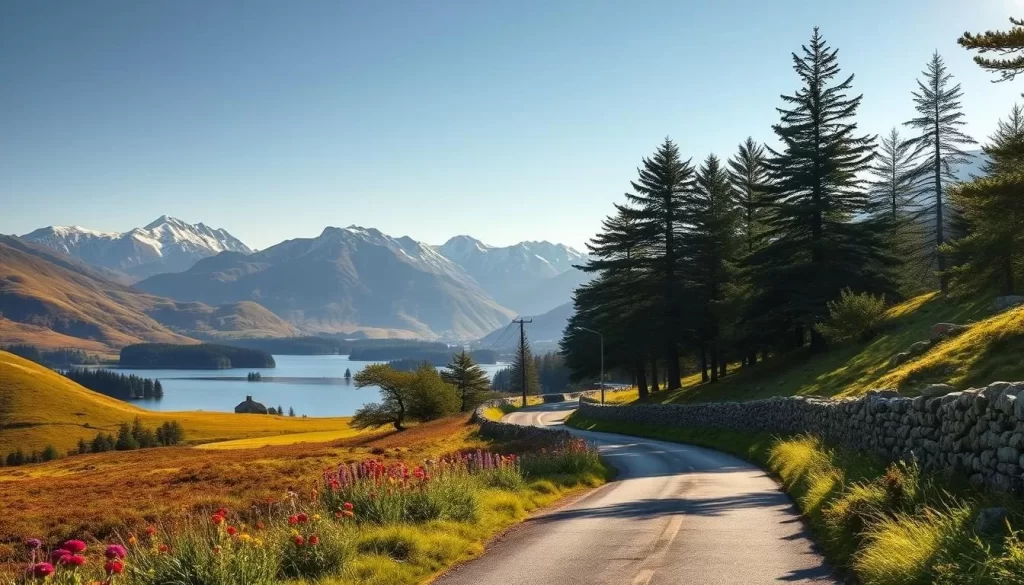
If you prefer fewer crowds, consider visiting in May or September. These months offer pleasant weather, with temperatures ranging from 48°F to 64°F. Daylight hours are still generous, giving you plenty of time to enjoy outdoor activities.
For those who don’t mind cooler weather, spring and fall are excellent choices. Spring brings blooming flowers and mild breezes, while fall offers crisp air and vibrant foliage. Just be prepared for occasional rain, especially in October, the wettest month.
| Month | Avg. Temp (°F) | Rainfall (inches) | Daylight Hours |
|---|---|---|---|
| May | 57 | 1.9 | 16 |
| June | 63 | 1.8 | 17 |
| July | 66 | 1.8 | 16 |
| August | 66 | 2.0 | 15 |
| September | 61 | 1.9 | 13 |
Winter, while colder, has its own charm. Shorter days and frosty mornings create a cozy atmosphere, perfect for indoor activities. Just pack warm layers and waterproof gear to stay comfortable.
By aligning your travel plans with the best time visit, you can enjoy all this region has to offer with fewer weather-related setbacks. Whether you’re hiking, sightseeing, or attending festivals, the right season ensures a memorable adventure.
Seasonal Highlights: Winter, Spring, Summer, and Fall Conditions
Each season in this region brings its own unique charm and challenges. Whether you’re bundling up for the cold or enjoying the warmth of the sun, understanding the weather patterns can help you make the most of your trip. Here’s a closer look at what to expect during each season.
Winter: Cold, Wet, and Windy Conditions
Winter here is known for its chilly temperatures and frequent rain. While urban areas rarely see snow, the Highlands often experience a dusting, creating a picturesque landscape. Be prepared for strong wind and shorter days, as daylight hours are limited. This season is perfect for cozy indoor activities and exploring frost-covered scenery.
Spring: Blossoming Nature and Mild Breezes
As spring arrives, the region comes alive with vibrant flowers like snowdrops and bluebells. Mild breezes and longer days make it an ideal time for outdoor adventures. Temperatures range from 45-55°F, offering a comfortable climate for hiking and sightseeing. This is also a quieter travel period, making it a great time to avoid peak crowds.
Summer: Long Days and Milder Temperatures
Summer is the most popular time to visit, thanks to extended daylight hours and pleasant weather. Average temperatures hover around 66°F, making it perfect for exploring the outdoors. July and August are often considered the best summer months, but they also attract the most visitors. Plan ahead to secure accommodations and avoid the busiest trails.
Autumn: Crisp Air and Vibrant Foliage
Autumn brings a stunning display of foliage, with shades of red, orange, and yellow painting the landscape. The air turns crisp, and temperatures range from 46-57°F. While rain is more frequent, the beauty of the season makes it worth the occasional drizzle. This is also a great time to enjoy quieter trails and lower travel costs.
By understanding the seasonal highlights, you can choose the perfect time for your adventure. Whether you’re drawn to the snowy peaks of winter or the sunny days of summer, each season offers something special.
Regional Weather Variations: Highlands, Lowlands, and Islands
Discover how the diverse landscapes shape the weather across this region. From the rugged Scottish Highlands to the milder Lowlands and the windswept islands, each area offers a unique climate. Understanding these differences can help you plan a smoother and more enjoyable travel experience.
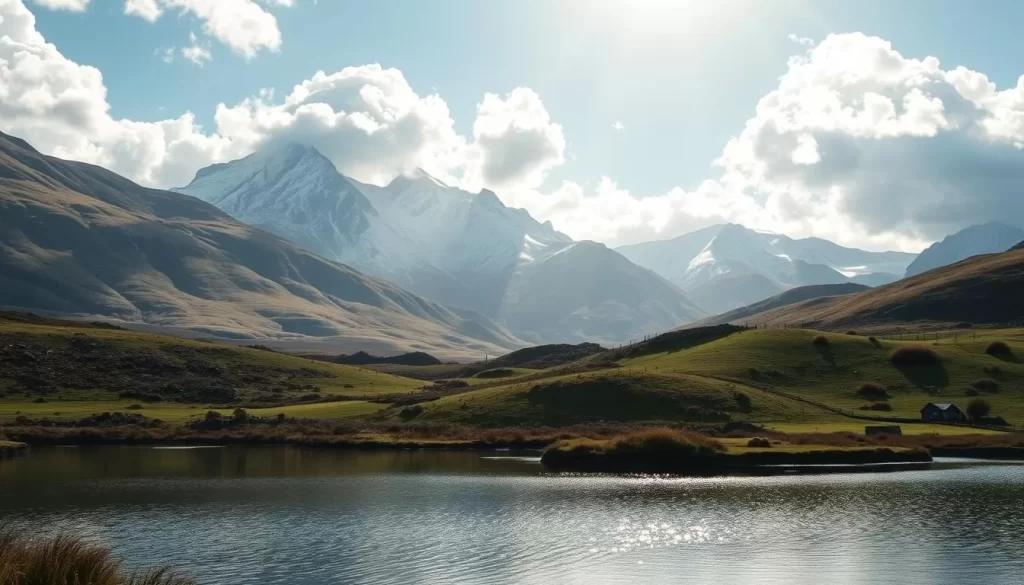
Highland Weather Dynamics
The Scottish Highlands are known for their dramatic weather shifts. The Highland Boundary Fault plays a significant role, creating cooler temperatures and higher rainfall. Winters here are colder, with snow often covering the peaks, while summers are mild but unpredictable.
If you’re exploring the Highlands, pack layers and waterproof gear. The weather can change quickly, especially in areas like Loch Lomond, where mist and rain are common. Despite the challenges, the stunning scenery makes it worth the effort.
Coastal and Island Climate Influences
Coastal areas and islands experience a distinct climate due to their proximity to the sea. The Atlantic Ocean moderates temperatures, but it also brings strong winds and frequent rain. Islands like Skye and Orkney often feel cooler and wetter than the mainland.
On the plus side, the coastal air is fresh, and the views are breathtaking. If you’re visiting an island, plan for windproof clothing and flexible itineraries. The weather can be unpredictable, but the unique charm of these areas is unforgettable.
| Region | Avg. Temp (°F) | Rainfall (inches) | Key Features |
|---|---|---|---|
| Highlands | 45-55 | 4.7 | Snowy peaks, rugged terrain |
| Lowlands | 50-65 | 2.1 | Mild, urban areas |
| Islands | 48-60 | 5.0 | Windy, coastal views |
By understanding these regional variations, you can tailor your travel plans to suit your preferences. Whether you’re hiking in the Scottish Highlands or exploring the islands, being prepared ensures a memorable experience.
Practical Tips for a Weather-Savvy Trip
Navigating the weather during your trip can be a game-changer. With ever-changing conditions, being prepared ensures a smoother and more enjoyable experience. Here’s how to stay ahead of the forecast and make the most of your adventure.
Interpreting Local Forecasts
Local forecasts are your best friend when planning daily activities. Pay attention to temperature trends, wind speeds, and precipitation chances. Apps like BBC Weather or Met Office provide detailed updates, helping you avoid unexpected downpours or wind shifts.
One thing to remember: forecasts can change quickly, especially in coastal areas. Always check for updates a few hours before heading out. This simple habit can save you from getting caught in sudden rain or fog.
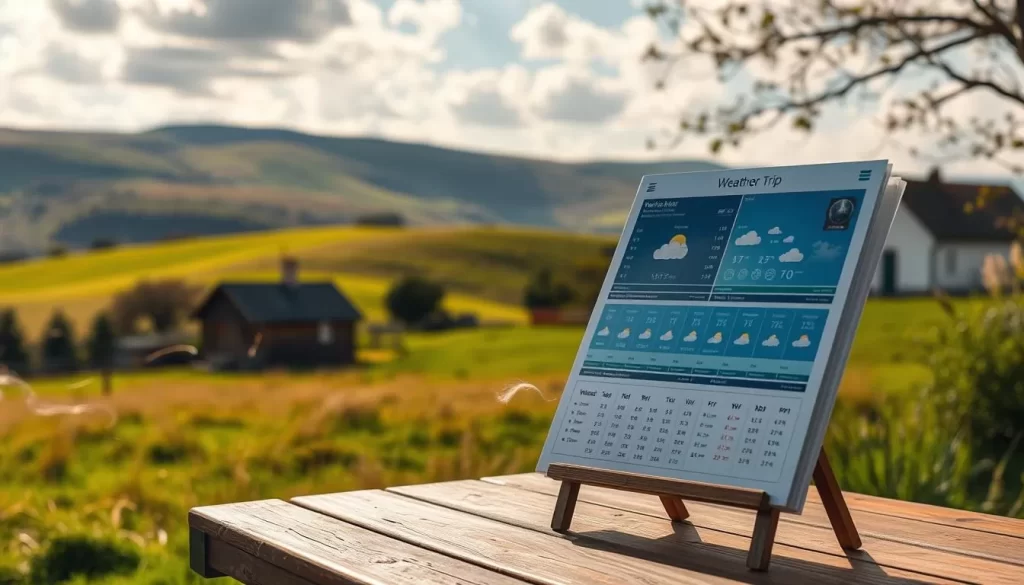
Timing Your Activities with Daylight
Daylight hours vary significantly depending on the time year. In summer, you’ll have up to 18 hours of light, perfect for long hikes or sightseeing. Winter, however, offers only 7-8 hours, so plan accordingly.
Start your outdoor activities early in the day to maximize daylight. For example, if you’re hiking in the Highlands, aim to begin by 9 AM. This gives you plenty of time to explore before the sun sets.
Another thing to consider: midday is often the warmest part of the day. Use this time for outdoor lunches or breaks, especially in cooler months.
By interpreting forecasts and aligning your schedule with daylight, you’ll feel confident adapting to any weather. Whether you’re exploring urban centers or remote trails, these tips ensure a seamless and enjoyable trip.
Packing Essentials for a Scottish Adventure
Packing smart is the key to enjoying your adventure in any weather. The region’s unpredictable climate demands versatile gear that adapts to sudden changes. Whether you’re hiking in the mountains or exploring the isle skye, the right preparation ensures a seamless experience.
Layering and Waterproof Gear
Layering is essential for adapting to cool mornings and warm afternoons. Start with a moisture-wicking base layer, add an insulating mid-layer, and finish with a waterproof outer shell. This approach keeps you comfortable in any condition.
Waterproof gear is a must, especially in rain-prone areas like the isle skye. A durable raincoat or poncho protects you from sudden downpours. Pair it with waterproof boots to keep your feet dry during hikes or city strolls.
Must-Have Accessories for All Seasons
Accessories can make a big difference in your comfort. A warm hat and gloves are crucial for chilly mornings, while a lightweight scarf adds versatility. Don’t forget sunglasses and sunscreen for sunny days, even in cooler months.
If you’re planning ski adventures in the Cairngorms, pack thermal socks and insulated gloves. For a holiday filled with outdoor activities, a sturdy backpack and a reusable water bottle are indispensable.
| Item | Purpose | Season |
|---|---|---|
| Waterproof Jacket | Protection from rain | All Seasons |
| Thermal Base Layer | Warmth in cold weather | Winter, Spring |
| Sunglasses | Eye protection | Summer, Spring |
| Hiking Boots | Support on trails | All Seasons |
| Reusable Water Bottle | Hydration on the go | All Seasons |
By packing smart, you’ll be ready for anything the weather throws your way. Whether you’re exploring the mountains or enjoying a holiday on the isle skye, these essentials ensure a stress-free adventure. For more tips on planning your trip, check out the best time to visit Scotland.
How to Navigate Midges and Rainy Days
Planning your trip to this region means preparing for unique weather challenges. Two of the most common issues you’ll face are midges and rain. Knowing how to handle these can make your adventure much more enjoyable.
Dealing with Midges: Prevention and Protection
Midges are tiny, biting insects that thrive in warm, humid conditions. They are most active during july august, especially in areas near water or dense vegetation. While they’re a nuisance, there are ways to protect yourself.
Start by using insect repellent with DEET or a natural alternative like citronella. Wear long sleeves and pants to minimize exposed skin. Midge nets are also a great thing scotland visitors swear by, especially for outdoor activities like hiking.
Timing your activities can also help. Midges are less active during windy or sunny conditions, so plan your outings accordingly. If you’re camping, choose elevated, breezy spots to reduce their presence.
Embracing Rain: Outdoor Strategies
Rain is a frequent thing scotland travelers encounter, but it doesn’t have to ruin your plans. With the right strategies, you can still enjoy your trip even on wet days.
Pack waterproof gear, including a sturdy rain jacket, waterproof pants, and boots. A compact umbrella can also be handy for city strolls. Layering is key, as temperatures can drop during rain showers.
Plan indoor activities for heavy downpours. Museums, castles, and local cafes are great options. If you’re exploring the outdoors, check the forecast and aim for breaks in the weather. Experienced visitors recommend having a flexible itinerary to adapt to changing conditions.
| Item | Purpose | Best Use |
|---|---|---|
| Insect Repellent | Prevent midge bites | Outdoor activities |
| Waterproof Jacket | Stay dry in rain | All seasons |
| Midge Net | Protect face and neck | Camping, hiking |
| Compact Umbrella | Quick rain protection | City exploration |
By being prepared, you can handle midges and rain like a pro. Whether you’re exploring the or hiking in the Highlands, these tips ensure a smooth and enjoyable experience.
Seasonal Events and Festivals in Scotland
Immerse yourself in the vibrant cultural tapestry of this region. From lively summer gatherings to cozy winter festivities, there’s something for everyone. Whether you’re drawn to traditional games or modern celebrations, these events offer a unique way to experience local heritage.
Summer Festivals and Highland Games
Summer is the perfect time to enjoy outdoor festivals and traditional Highland games. The Edinburgh Festival Fringe, held every August, is the world’s largest arts festival. It features thousands of performances, from comedy to theater, attracting visitors from around the globe.
For a more traditional experience, don’t miss the Highland games. These events showcase Scottish culture through caber tossing, bagpipe competitions, and Highland dancing. Held in various citys and towns, they’re a must-see for anyone wanting to dive into local traditions.
Autumn and Winter Cultural Attractions
As the seasons change, so do the attractions. Autumn brings events like the Glasgow International Comedy Festival, which lights up the city with laughter. It’s a great way to enjoy the cooler weather while experiencing local talent.
Winter is equally enchanting, with festive markets and holiday celebrations. The Edinburgh Christmas Market transforms the city into a winter wonderland, complete with ice skating and seasonal treats. These events are perfect for family outings, offering something for all ages.
From summer festivals to winter markets, these seasonal events create unforgettable memories. Plan your visit around these highlights to make the most of your trip.
Conclusion
Planning your journey with weather in mind ensures a smoother experience. Understanding the region’s distinct climate and seasonal variations helps you make the most of your trip. From packing essentials to timing your activities, these practical tips ensure you’re prepared for anything.
By following this guide, you can confidently embrace both adventure and cultural experiences. Each season offers unique highlights, whether it’s snowy landscapes or vibrant autumn foliage. Always double-check local forecasts and regional conditions before your trip to stay ahead of any changes.
Use this comprehensive resource to plan a well-rounded and memorable adventure. For more insights on selecting the right time to visit, explore this weather-savvy travel guide.
The above is subject to change.
Check back often to TRAVEL.COM for the latest travel tips and deals.
